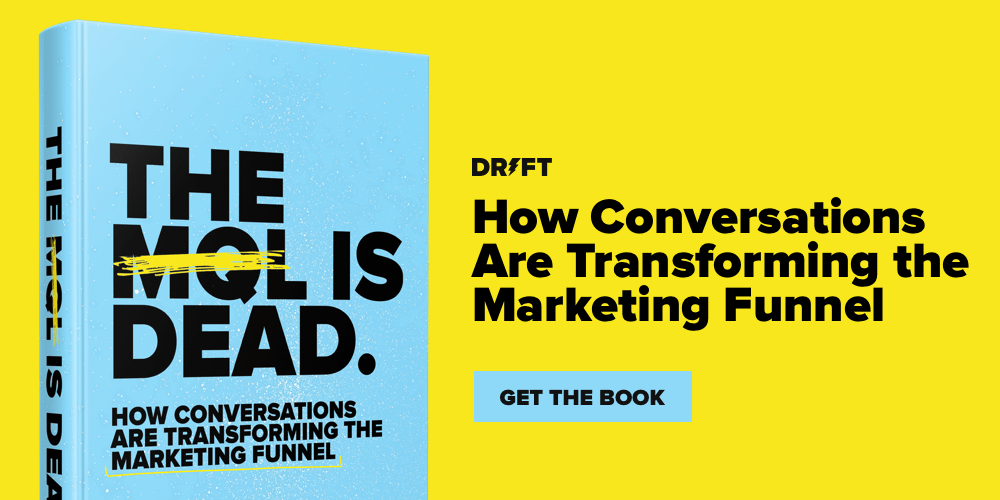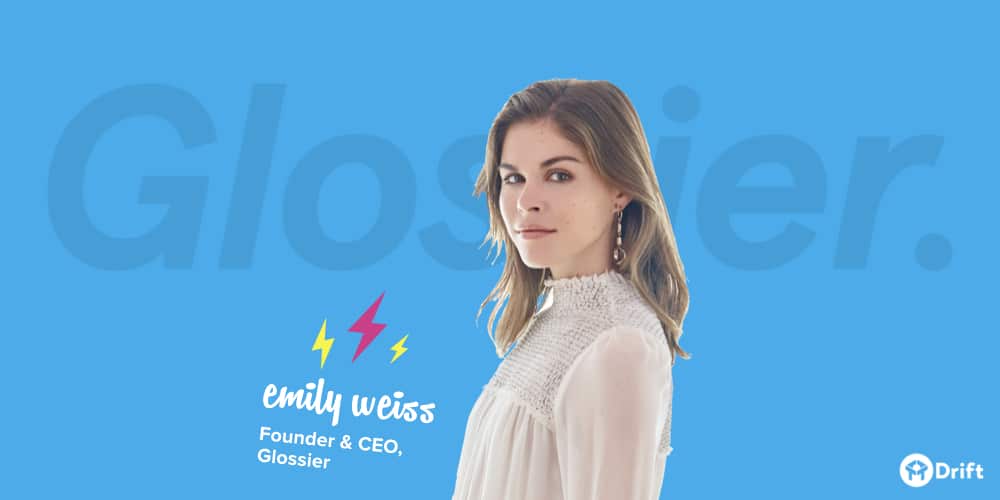Until recently, you might only have heard of the video conferencing tool Zoom if you worked in the tech industry.
But since the spread of the coronavirus caused so much of the world to adopt work from home policies, Zoom has become almost synonymous with its function. Just like Google and Uber are now verbs, so is Zoom.
At Drift, Zoom had already become our go-to tool for running company meetings when we couldn’t meet in person. We’ve even built an integration for Zoom and Drift Video.
And based on the critical need it now serves, Zoom has evolved from an already-successful IPO to a stock market juggernaut worth more than Uber and Lyft combined. According to market intelligence firm SensorTower, first-time installations of Zoom’s mobile app have skyrocketed 728% since March 2, 2020.
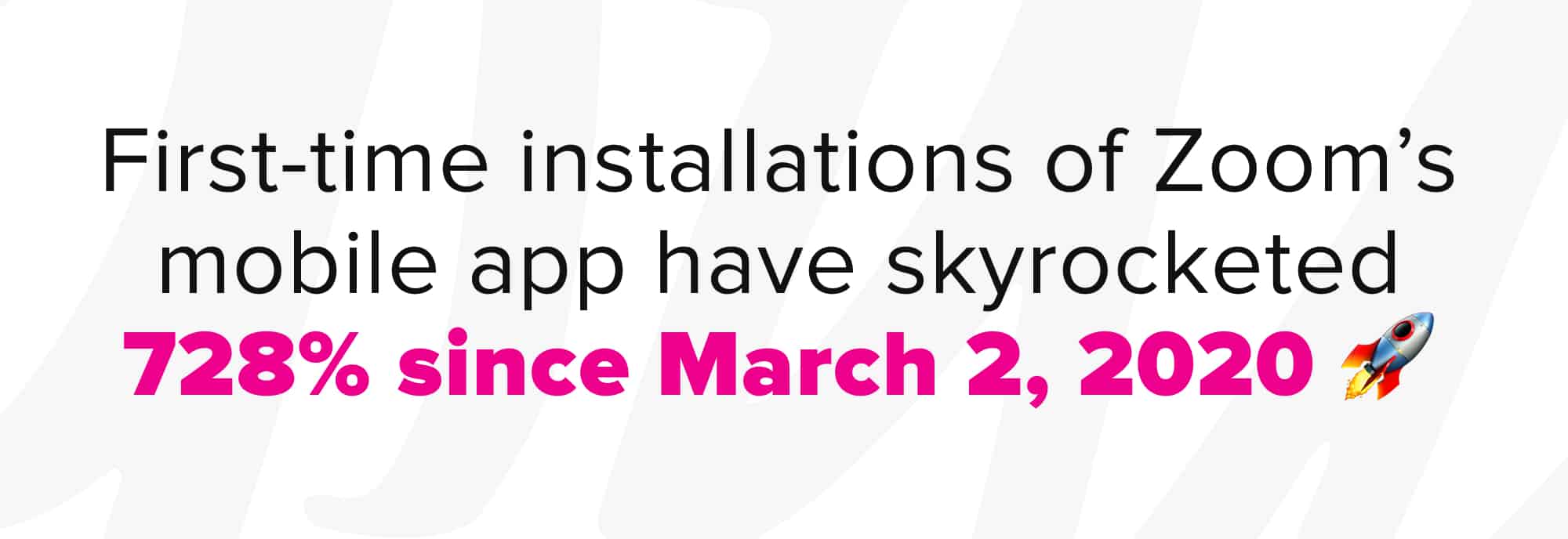
In its fourth-quarter and fiscal 2020 earnings report around the same time, Zoom said its customer base had also grown to 81,900 firms with more than 10 employees, which is an increase of 61% since the same time last year. Its stock price has surged more than 100% since the outbreak began.
To support that growth, Zoom has built offices in San Jose, Santa Barbara, Denver, Atlanta, Kansas City, Sydney, London, Paris, Tokyo, and Amsterdam. Overall, the company now employs more than 2,000 people.
Years after attracting funding from venture capitalists, Zoom has proven itself as a “unicorn,” as their market cap has now stretched beyond $40.3 billion. (Although here’s a fun fact: Zoom’s founder and CEO Eric Yuan hates the term “unicorn,” and tells Zoom employees not to use it).
Though the spread of COVID-19 made Zoom’s service as essential to working as internet access, the company had already laid the foundation for its current success with consistently strong growth.
What did it do, and what can you learn? Read on to put Zoom’s current success in context.
The 3 Keys to Zoom’s Growth
Long before its IPO last year, there were three key components of its growth strategy that helped give Zoom a competitive advantage.
- Being customer-driven is ingrained in Zoom’s company DNA.
- Zoom is building a product that can sell itself.
- Zoom isn’t afraid to splurge when it comes to building their brand.
Let’s explore each of these components of Zoom’s growth strategy in more detail…
1) Being customer-driven is ingrained in Zoom’s DNA.
When it comes to building video conferencing software, this isn’t Zoom founder and CEO Eric Yuan’s first rodeo.
Eric left Beijing to become one of the founding engineers at Webex back in 1997. As Webex’s VP of Engineering, he helped grow the team from 10 to more than 800 engineers worldwide.
When Webex was acquired by Cisco in 2007 for $3.2 billion, Eric went on to become Cisco’s VP of Engineering. And that’s when things took a turn…
Under new management, the innovation that had been driving Webex came to a halt. And Eric was growing increasingly dissatisfied with the outdated product they were delivering to customers.
As he explained to Forbes:
I was paid very well as a VP at Cisco. But Webex was my baby. In 2010 and 2011, I did not see happy customers. I was very embarrassed that I spent so much time on the technology. Why are the customers not happy?
Frustrated that Cisco’s management wouldn’t address the issue and update their strategy, Eric left in 2011.
But he didn’t leave alone. Around 40 engineers left with him. And together they went and built Zoom.
After conducting an internal survey, Zoom discovered that their engineering team has more than 1,000 years of combined experience building video conferencing and real-time collaboration software.
Since day one, the team at Zoom has been focused on solving for the customer, and – more specifically – they’ve been focused on building video communication tools that actually work (and don’t make you want to pull your hair out).
From the moment we founded Zoom, our main focus has been to provide a cloud video communications solution that would make customers happy. That focus has continued to guide all our innovations, partnerships, and other initiatives. The fantastic growth we’re experiencing and the many industry accolades we’ve received can all be attributed to having satisfied customers that enjoy using our platform.
2) Zoom built a product that can sell itself.
When Eric decided to leave Cisco (and his “baby” Webex) behind to start a competing video conferencing solution, everyone told him he was crazy.
The main issue people pointed to: It was a crowded market. In addition to Cisco, there were several other established players including Microsoft, Adobe, Citrix, and Polycom, as well as newcomers like Highfive, Join.Me, BlueJeans Network, and Vidyo.
Eric’s solution for breaking free from the competition was simple:
Zoom would build the best product in the market.
As he told Forbes:
It’s extremely crowded, but the potential is huge. If our product is better than any others, we can survive.
So, how do you go about building a product that’s better than all the others? Refer back to the previous section: It’s all about being customer-driven.
As Nick Chong, Zoom’s Head of Global Services (and former Head of Product Marketing) explained:
We have a relentless focus on making the best product with the best user experience. This is ultimately what every customer wants. Toward this end, we spend much of our time listening to customers and fine-tuning our software to fit their needs.
At Zoom, gathering – and acting on – customer feedback is how they’ve been able to build a best-in-class product. And in many cases, the Zoom team gathers this feedback via Zoom video meetings. (Talk about eating your own dog food).
Zoom also regularly monitors its Net Promoter Score (NPS), which currently stands at an industry-leading 72.
But it’s not just the quality of their product that gives Zoom a competitive advantage, it’s also how they deliver that product:
Zoom’s video conferencing features are free for everyone to use – up to 40 minutes, that is. (FYI: Zoom decided on 40 minutes because research showed that 45 minutes was the ideal duration for a video conference.)
But clearly this 40-minute limit hasn’t deterred people from trying the product. In fact, their freemium model, coupled with word-of-mouth, is really what has been powering their customer acquisition. That will only continue given Zoom’s decision in March 2020 to remove the 40-minute limit for free accounts at tens of thousands of schools in the U.S. and other countries.
As Eric explained during an interview with SaaStr:
In our case, we really want to get the customers to test our product. This market is extremely crowded. It’s really hard to tell customers, “You’ve got to try Zoom.” Without a freemium product, I think you’re going to lose the opportunity to let many users to test your products.
We make our freemium product work so well. We give most of our features for free and one-to-one is no limitation. That’s why almost every day there are so many users coming to our website, free users. If they like our product, very soon they are going to pay for the subscription.
To help you get a better sense of just how many people have been using Zoom over the years, consider this:
In 2013, 3 million people participated in a Zoom meeting.
In 2014, Zoom had 30 million meeting participants.
In 2015, it grew to 100 million.
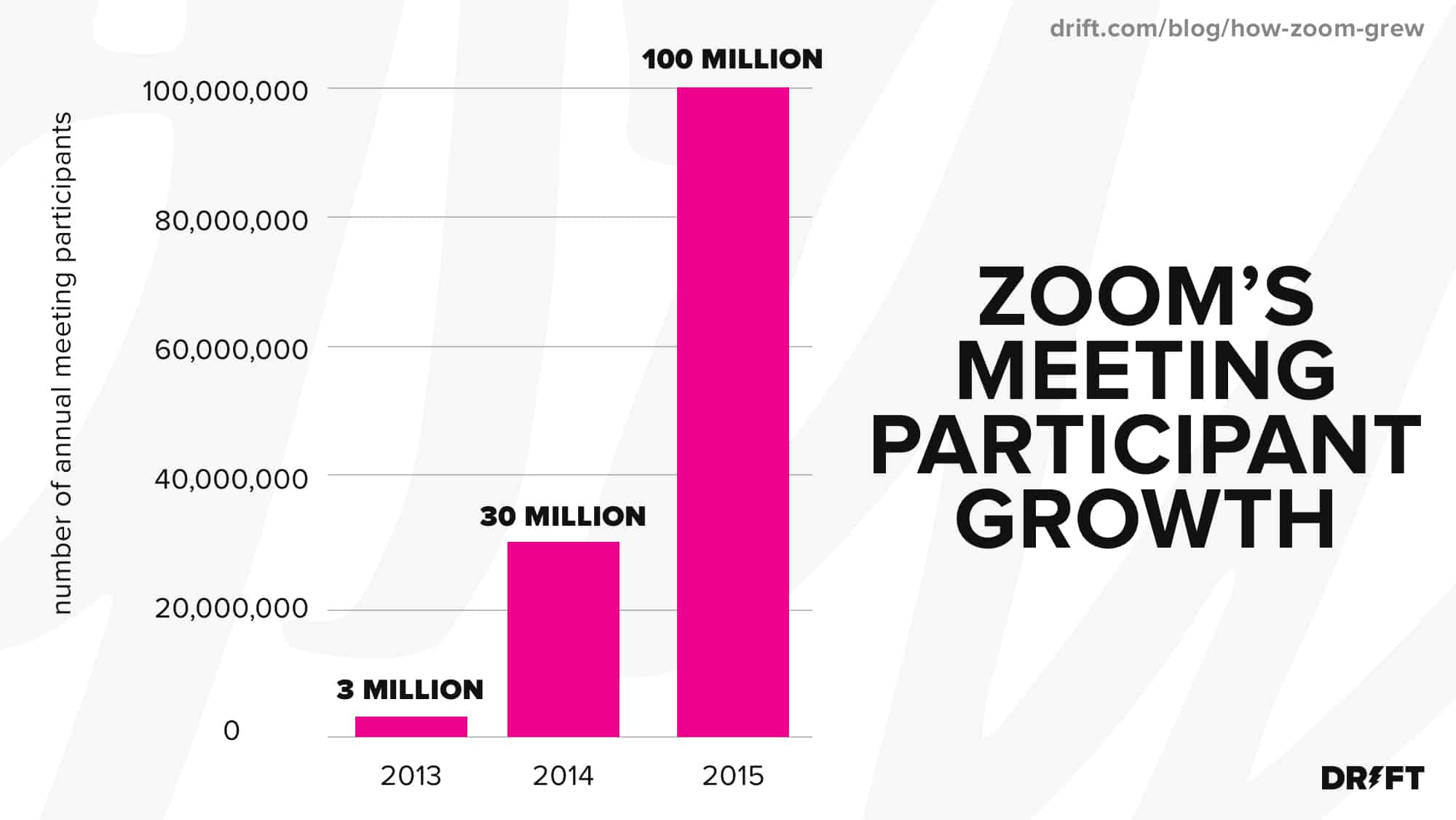
And in March 2020, Zoom reported more than 200 million meeting participants every single day.
Ultimately, this organic product adoption is what got Sequoia interested in leading Zoom’s latest funding round. As a Sequoia spokesperson told TechCrunch:
We had been watching the video conferencing space for many years because we were convinced that it was a huge market primed for innovation. But we couldn’t find a product that customers loved to use. That changed when our portfolio companies started raving to us about Zoom.
3) Zoom isn’t afraid to splurge when it comes to building their brand.
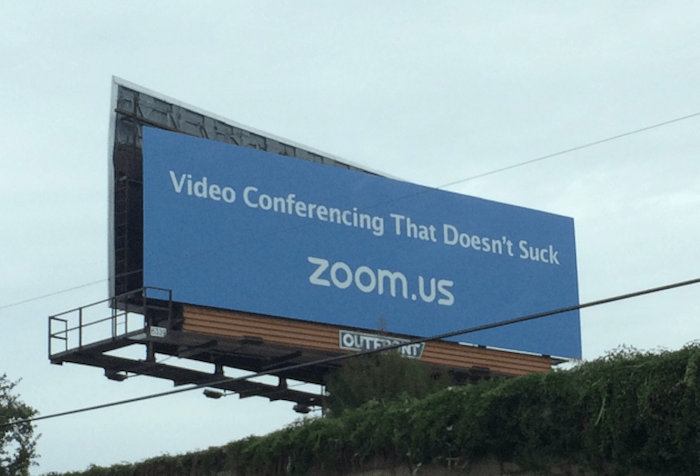
As we just learned in the previous section, a key aspect of Zoom’s growth strategy has been to let their product do most of the talking.
“The best salespeople join us because our product is easy for them to sell,” Eric once said.
So from a marketing perspective, Zoom hasn’t been focused on aggressively chasing down prospects. Instead, they’ve been focused on getting the Zoom brand out in front of as many eyeballs as possible. And they started by targeting one key group:
Early adopters.
As Nick (Zoom’s former Head of Product Marketing, current Head of Global Services) explained:
As an emerging vendor, we had to focus on marketing to the curious, adventurous bunch known as early adopters. This allows us to leverage our greatest advantage – user experience – because once an early adopter uses a product they love, they will spread the word.
So, where do you find a bunch of these potential early adopters for your product?
The answer: Sitting in traffic on Route 101, of course – right in the heart of Silicon Valley.
So Zoom made the decision to fork over the cash and put up a billboard. And then they decided to put up another billboard. And another. (And just a quick FYI: each one of these billboards can cost north of $50,000 per month.)
These billboards mark the one exception to Zoom’s typically frugal marketing strategy.
For example, even when they have vendor booths at conferences and events, the Zoom team doesn’t spend thousands on decking out their setup or creating promotional materials – they simply put their *live* product up on some HD screens and let people experience it for themselves.
So, why is the investment in billboards worth it? Here’s how Eric explains it:
It’s to promote our brand. It’s hard to market a brand within a short period of time. After we had our first billboard, my neighbor, she told me that, “I saw your billboard.” I think, wow, this is great.” Then I told our marketing team, “Let’s have another one.” Soon, a lot of other people they say, “We saw your billboard.” OK, “Let’s add a third one.”
As you can see, there really isn’t any hard science at work here. It’s an exercise in pure brand awareness. It’s about making the Zoom name and logo a part of the fabric of the Bay Area (and beyond).
Another way Zoom is getting their brand out there?
Basketball.
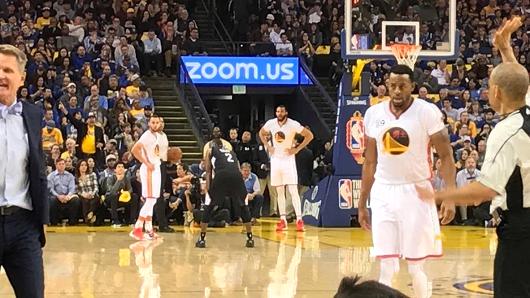
In 2016, Zoom worked out a three-year deal with the Golden State Warriors, where the team gets to use their technology for free and, in exchange, Zoom gets prominent branding inside the arena during games (on scoreboards, digital signs, etc.).
Eric told CNBC that this type of brand exposure “actually speeds up sales cycles,” because it gives people who are thinking about trying or buying Zoom any extra boost of confidence.
So, how successful has Zoom’s approach to brand-building been? It’s hard to tell. But using Twitter followers as our measuring stick, it’s clear that people are interested in what Zoom is up to.
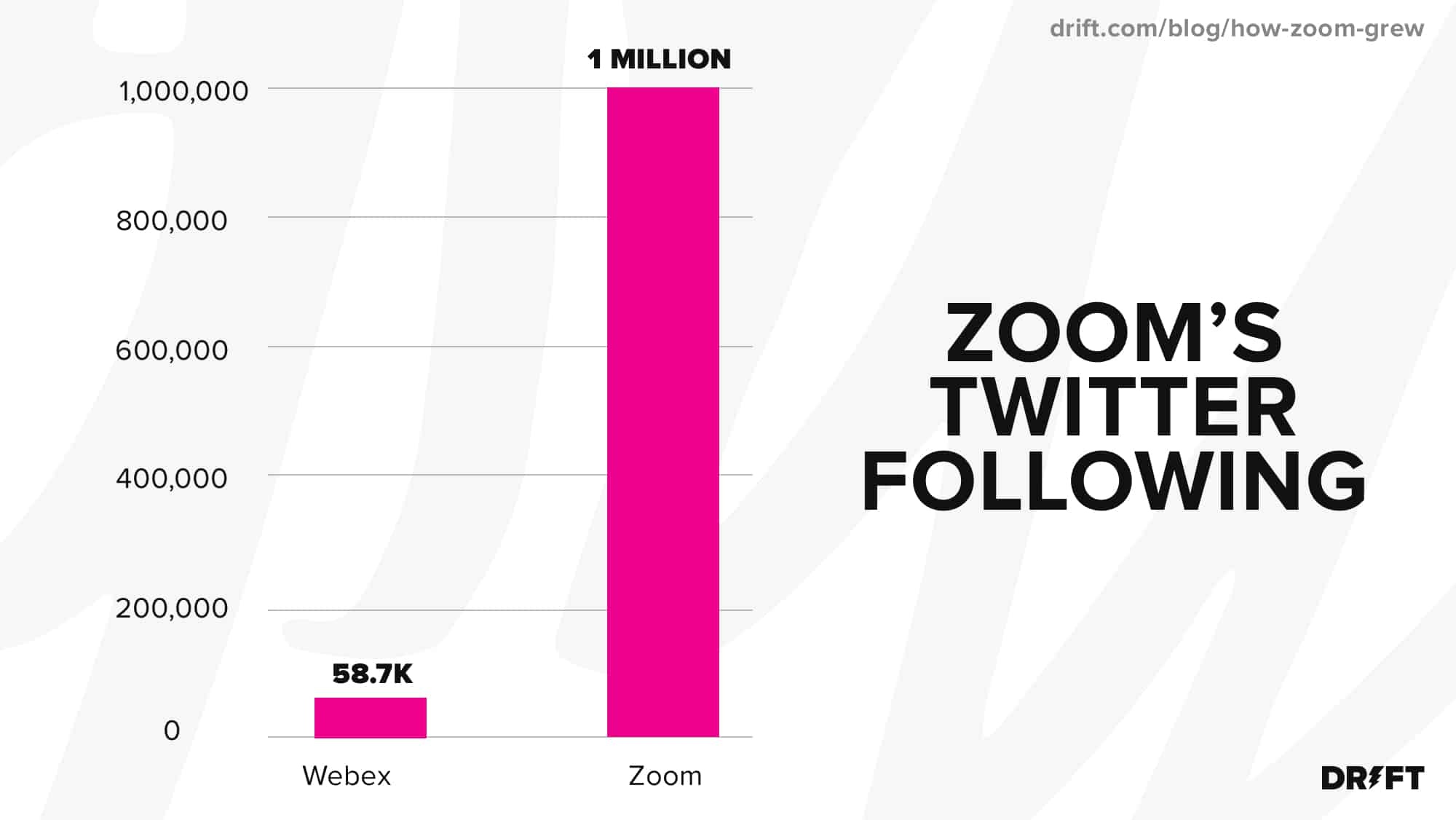
The Zoom brand is now at one million followers, infinitely far ahead of Webex’s brand in terms of mindshare.
Final thought: Why you should strive for hypergrowth (not out-of-control growth).
As Zoom — a company that went from $0 to billions in less than a decade — it’s easy to look back and think:
“Wow, they must have had the pedal to the metal the entire time!”
But here’s the thing.
Throughout Zoom’s impressive growth, Eric’s foot was always there to tap the brakes. As he explained to SaaStr, keeping their existing customers happy has always come first – even if that means slowing down occasionally.
Ultimately, we do not want to grow too fast. Our philosophy is we really focus on making our existing customer happy. We do not aggressively pursue the new prospect. Also, we always prioritize the features requested by our existing customers … We truly believe if you do not make the existing customer happy, even if you get more new prospects, it may not be sustainable.
That grounded approach will be more important than ever now, given that Zoom is helping keep so much of the world connected during one of the biggest global challenges of all time.
Editor’s Note: This article was published in November 2017 and has been updated to reflect new information.





